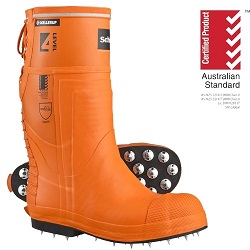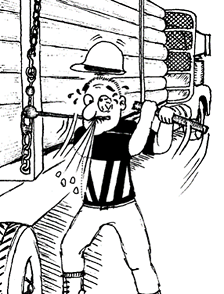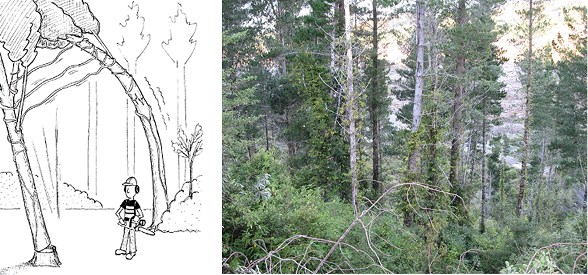May 2015. Our High Injury Count!
FIPS 7051 22/05/15 LTI
Description: While clearing native scrub from around the base of a tree, the chainsaw kicked-back downwards cutting through the tree fellers L4 chainsaw boot and into his foot.
This incident should not distract our attention away from wearing L3 (or better) chainsaw boots. Actually, the cut could have been much worse had these boots not acted to limit the severity!
NB: The manufacturer is currently analysing the boots in question and will report in due course.

FIPS 7068 01/05/2015 LTI
Description: Late Report 25/03/15: A winch handle (twitch) kicked-back while the driver was re-tightening his load. He suffered a sprained jaw. The doctor gave him two days off work to recover.
NB: This incident reminds us of the need to report on time and in full so that there is no confusion about what has happened, where and to whom.
Timely reporting and management can prevent minor injuries turning into 'lost time' injuries.

FIPS 7065 26/05/2015 MTI
Description: A planting auditor found that a splinter lodged in his finger had infected. This required a visit to the doctor and antibiotics.
Additional Controls - Vines & Undergrowth!
FIPS 7051 17/05/15 MTI
After cutting the tree, the tree feller retreated down his escape route (approx. 3-4 meters) to watch it fall to the ground.
A bush-lawyer vine, entwined in the head of this tree had its origin somewhere behind the feller's viewing position. As the tree fell, the vine pulled up and across his neck and chin. The tree feller sustained a 5cm cut along the right hand side of his chin, which required several stitches.

The photograph above shows a wind-damaged stand with thick undergrowth, including lawyer vines growing in profusion. While felling always requires careful planning, some additional controls may also be necessary in stands such as these.
- Â Where possible, fell with a machine or use a suitable (protected) machine to clear excess undergrowth and vines.
-
Thoroughly clear vegetation from around the tree and along the escape route 'maximise' your vision and spend extra-time looking for over-head hazards.
-
Extend the length of the escape route and move quickly to the end of your escape route!
View this article in Safety Bulletin 92
